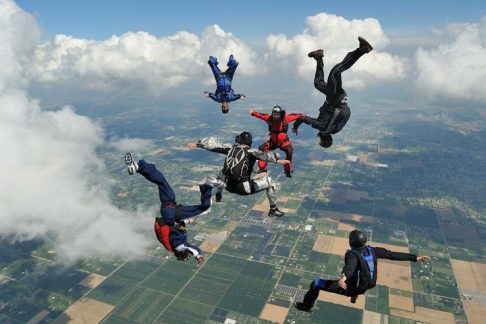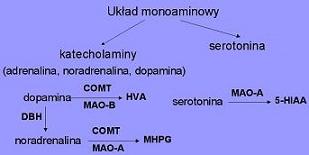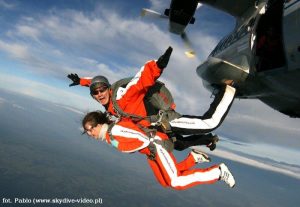Sensation seeking


Last modified: 03-05-2020
The concept “sensation seeking” was developed in 1979 by Marvin Zuckerman and its definition is “the search of varied, novel, complex and intense feelings and experiences, and readiness to take physical, social, legal, and financial risks for the sake of such experiences”.
The definition I think is very accurate because it draws attention to what I also noticed, namely, that the purpose of sensation seekers is not taking risks for the sake of risks, but the search of experience. Skydivers do not skydive because of risk but although risk.
According to Zuckerman, each one is located somewhere on the scale between extreme sensation seeking and extreme sensation avoiding. He divided sensation seeking into 4 traits:
- Thrill- and adventure-seeking – those that achieve high scores on this subscale look for experiences that deliver extreme sports.
- Experience-seeking – Zuckerman defines this subscale as a search for activation through the mind and senses and it expresses itself in unplanned journeys, search for companionship of outstanding people, the use of drugs.
- Disinhibition – people who are high on this subscale are characterized by a tendency to excessive drinking, fleeting sexual relations, gambling.
- Boredom susceptibility – it is an aversion to routine work, the repetition of experiences, boring people.
The biological mechanism of sensation seeking
Zuckerman from the beginning tried to explain the biological mechanism of sensation seeking. His first theory he took from Hans Eysenck, who deals with extra- and introversion issues. According to Eysenck, extroverts have lower level of activity of reticular formation and cerebral cortex than introverts, and this why they have “hunger of stimulation“. Probably this lower activity of reticular activating system (RAS) makes extroverts like to be in the company of many people and generally enjoy such activities that increase the activity of this system. Introverts, by contrast, prefer quiet activities often alone, because their reticular formation and cerebral cortex are so active, that they do not need more stimulation. Zuckerman at the beginning thought that, like extroverts, sensation seekers also have lower levels of activity of these brain areas, but later abandoned his theory. This happened as a result of studies in which sensation seekers and sensation avoiders were treated with amphetamine. According to the Zuckerman’s assumptions, amphetamine, which is a stimulant should provide positive sensations only sensation seekers, but it turned out that both the people who are high up, as well as those that are low on the scale of sensation seeking, have positive experience with the amphetamine, and both the group performed better the task they were told to perform in this experiment.

Currently Zuckerman believes that people with high levels of sensation seeking have a higher optimal level of catecholamin systems activity (CSA). The catecholamine system includes adrenaline (which plays a very small role in biological processes of the brain), noradrenaline and dopamine. Catecholamines with serotonin are part of the monoamine system. Noradrenaline is synthesized using the enzyme DBH (dopamine beta-hydroxylase) from dopamine. Dopamine is decomposed with the enzyme COMT (catechol methyltransferase) and MAO-B (Monoaminoxidase B), and noradrenaline is decomposed with COMT and Monoaminoxidase type A. MAO-A decomposes also serotonin. Several studies have focused on the study of the amount of MAO-B in platelets and demonstrated that the level is lower in sensation seekers than in those who avoide sensations. The level of MAO-B in the blood is considered the equivalent amount in the brain (although this has not been explicitly confirmed yet), so some scientists believe that the desire to seek new sensations is caused by excessive reactivity of the dopaminergic system. That is, if I understand it well, in these individuals e.g. extreme sports increase dopamine levels much larger than in people who do not like such sports, and because such persons also need more dopamine (because they have a higher optimal level of CSA), this is why they search for activities that raise this level.
The research also shows that people who are high on sensation seeking scale have lower levels of noradrenaline and DBH in the cerebrospinal fluid, but it is difficult to explain, because the role of noradrenaline in the brain is not known yet. It was also shown that people having a high scores on the subscale of disinhibition have lower reactivity of the serotonergic system. That can be explained because it is known that serotonin is responsible for the functions of inhibiting behavior.
Sensory deprivation
Sensory deprivation are conditions of deprivation of external stimuli inflow. Marvin Zuckerman created a theory of sensation seeking exactly under the influence of Donald Hebb’s research on sensory deprivation. In this study people were instructed to lie every day blindfolded, clogged ears and in special gloves, which abolished feeling. For everyone after some time (the longest if I remember correctly, after less than a week), such conditions became very uncomfortable and they decided to resign from the study. Zuckerman found that people characterized by a lower tolerance for such conditions are sensation seekers who for the well-being need a constant source of stimuli.
Evoked Potentials
Evoked potential is a bioelectric phenomenon appearing in a response to a specific applied stimulus (visual, auditory or sensory) which can be observed in the EEG.
Buchsbaum distinguished two types of people:
- Strengthening type – in response to an increase in the intensity of the stimulus occurs at such people increase in the amplitude of evoked potentials.
- Damping type – in response to an increase in the intensity of the stimulus occurs at such people decrease in the apmlitude of evoked potentials or increase smaller than that observed in Strengthening type.
It is explained by so called protective inhibition, which, according to Pavlov, who introduced this concept aims to protect the nervous system from overloading stimuli.
Zuckerman and Buchsbaum acknowledged that sensation seekers should belong to the strengthening type and research confirmed this.
And finally a few interesting facts:
- In people receiving high scores on a disinhibition subscale there is a high level of testosterone, estrone and estradiol. I did not found the explanation.
- Sensation seeking heritability coefficient is 0.6 and this is one of the highest rates of heritability of temperament traits.
- Among the sensation seekers there is a higher percentage of alcoholics, drug addicts, criminals and psychopaths, than in those receiving low scores on this scale.
References
The text is based on my seminar delivered in 2008 on Neurobiology Scientific Circle at the Faculty of Biology, University of Warsaw. Preparing it, I used mainly Jan Strelau’s “Psychologia temperamentu” and several other sources.
Author: Maja Kochanowska






Add comment